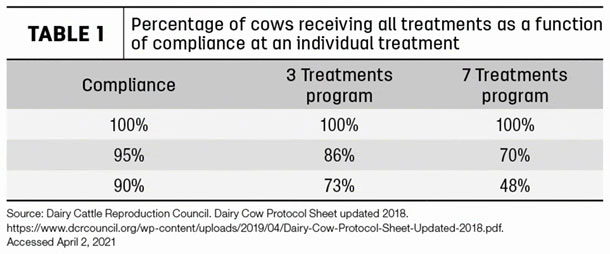Under the summer sun, we’re all focused on setting cows up for success while facing the risks of heat stress. It’s important to stay the course during the hotter months, especially when it comes to reproduction.
This is the perfect time to work with your team to set a strong fixed-time artificial insemination (FTAI) plan that works for your herd.
I am a sixth-generation dairy farmer and part owner of dairies in Wisconsin and Texas, in addition to working as a dairy production specialist for Zoetis. So when it comes to understanding the importance of building the best dairy herd possible with efficiency, I get it.
I’m going to share actionable tips that can help you build an FTAI program which not only helps your cows maintain high fertility year-round but also helps keep your employees safe, including women. When dealing with reproductive hormones and prostaglandin, women can be at a higher risk of infertility or even pregnancy loss. There needs to be clear, up-front communication and a level of comfort where women can speak up and set boundaries of what they are and are not able to do.

Tip 1. Set strict protocols and follow them
Compliance, compliance, compliance. There are great programs to help build an FTAI program, such as double Ovsynch. These programs have research behind them, so follow the calendars. No going rogue. However, the results are only as good as the work you put into them. Establish employee responsibilities and checkpoints with your team.
This goes further than your FTAI program – consider this compliance-driven approach in your fresh cow transition program. The healthier your cows are their entire life cycle, the more likely they are to become pregnant, have a healthy calf and enter back into the milking herd.
Bonus Tip: Put fun incentives in place for following protocols and obtaining your pregnancy rate goals, such as bonuses or employee outings. Give attention to celebrating successes in addition to analyzing things that have gone wrong.
Tip 2. Build a team with strong communication skills
To adhere to the protocols you’ve set, you need a team with strong communication skills. This helps teams maintain clear roles and responsibilities. Otherwise, the dominoes start to fall. It also impacts the success of your repro program – you could miss a cow in heat, and that costs you money. Delays in rebreeding can cost about $3 per day for each day open.
A team is more than just the employees on a farm. It includes your veterinarian, A.I. technicians and other consultative experts as well. It always helps to bring in an outside perspective. External parties also can help you facilitate the conversation and push your team to set clear responsibilities and expectations.
Bonus Tip: Set routine meetings with key players on the farm, including external parties, to ensure all stakeholders are on the same page when it comes to reproduction.
Tip 3. Focus on safety
Put safety in mind, for the cows and for your people. Routinely evaluate these key areas to help create the safest workplace environment possible:
- Properly lock up the right cows before giving shots. Unlocked animals run the risk of application error while giving the hormones, treating the wrong animal or someone or some animal getting hurt.
Bonus Tip: Have more than one employee help identify and lock up the right animals. - Ensure that women who are pregnant or are planning to start a family have vocalized their backup plan with the team. For example, they have indicated a clear replacement employee who is responsible for giving the prostaglandin shots to cows. Or if they want to continue giving the prostaglandin shots, prioritize an extra person to help them lock in and restrain cows.
Bonus Tip: Be vocal that employees can and should be confident to speak up about sensitive topics like this.
These tips and insights can be used across different functions and programs on your farm. Starting here with your reproduction program can help your team build better habits, improved communication skills and a higher level of trust. Not only could you see improvements in the health of your cows and your bottom line, but also you could provide your employees with a better place to work.
As a mom who often wonders about her daughter following a career in the dairy industry, I feel personal hope that these are areas of continuous improvement.
References omitted but are available upon request by sending an email to the editor.






